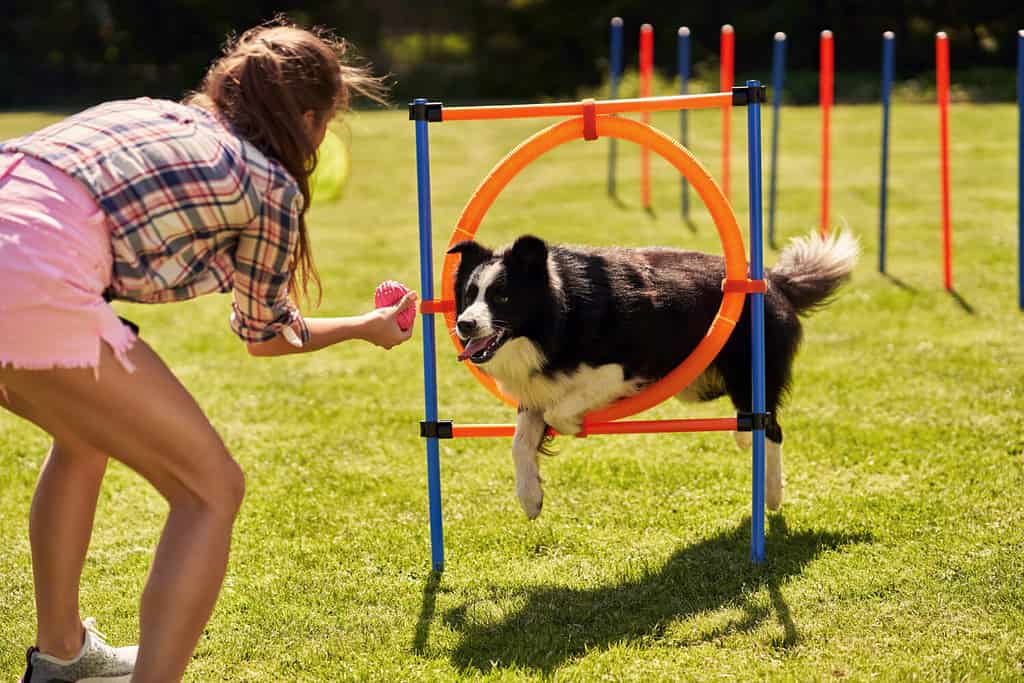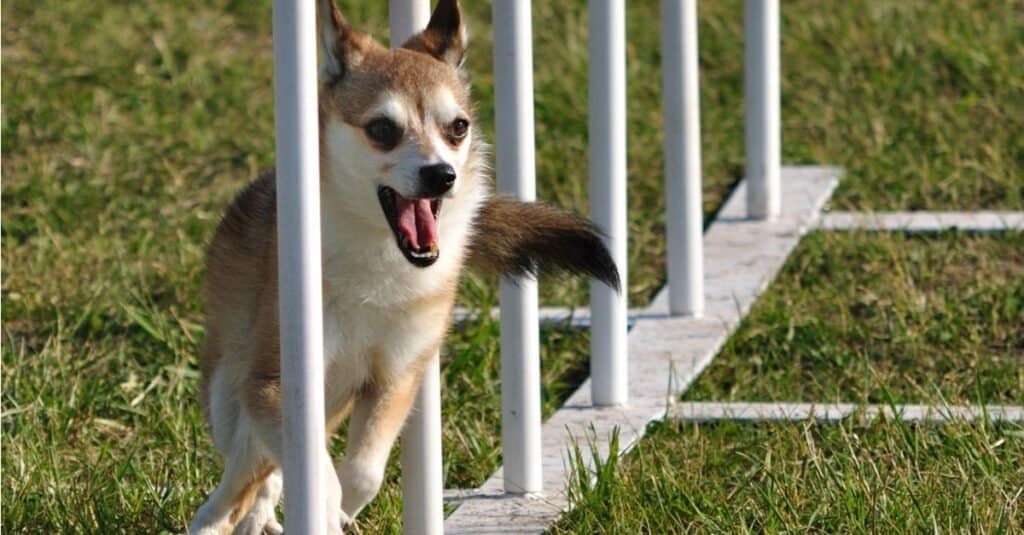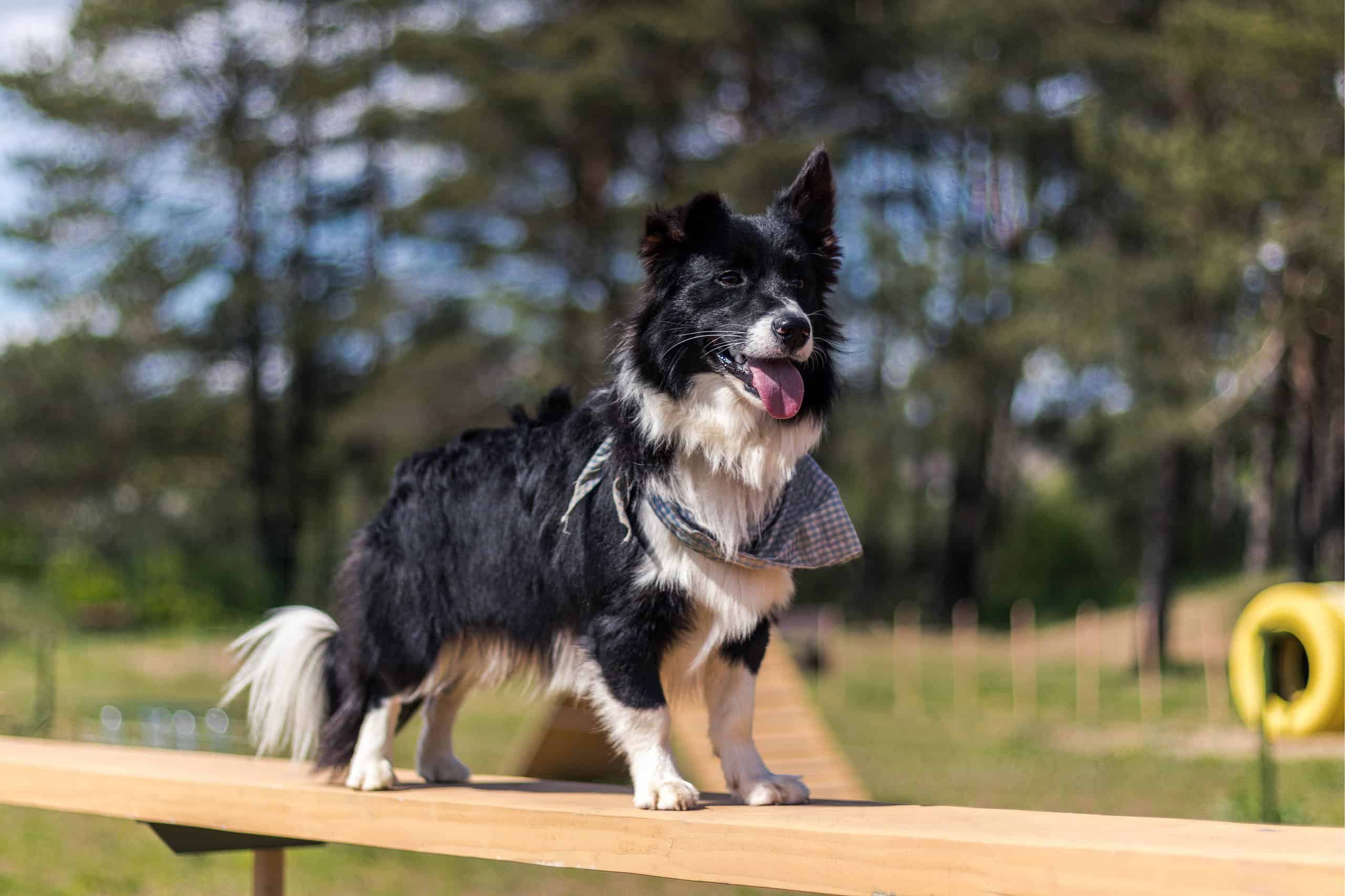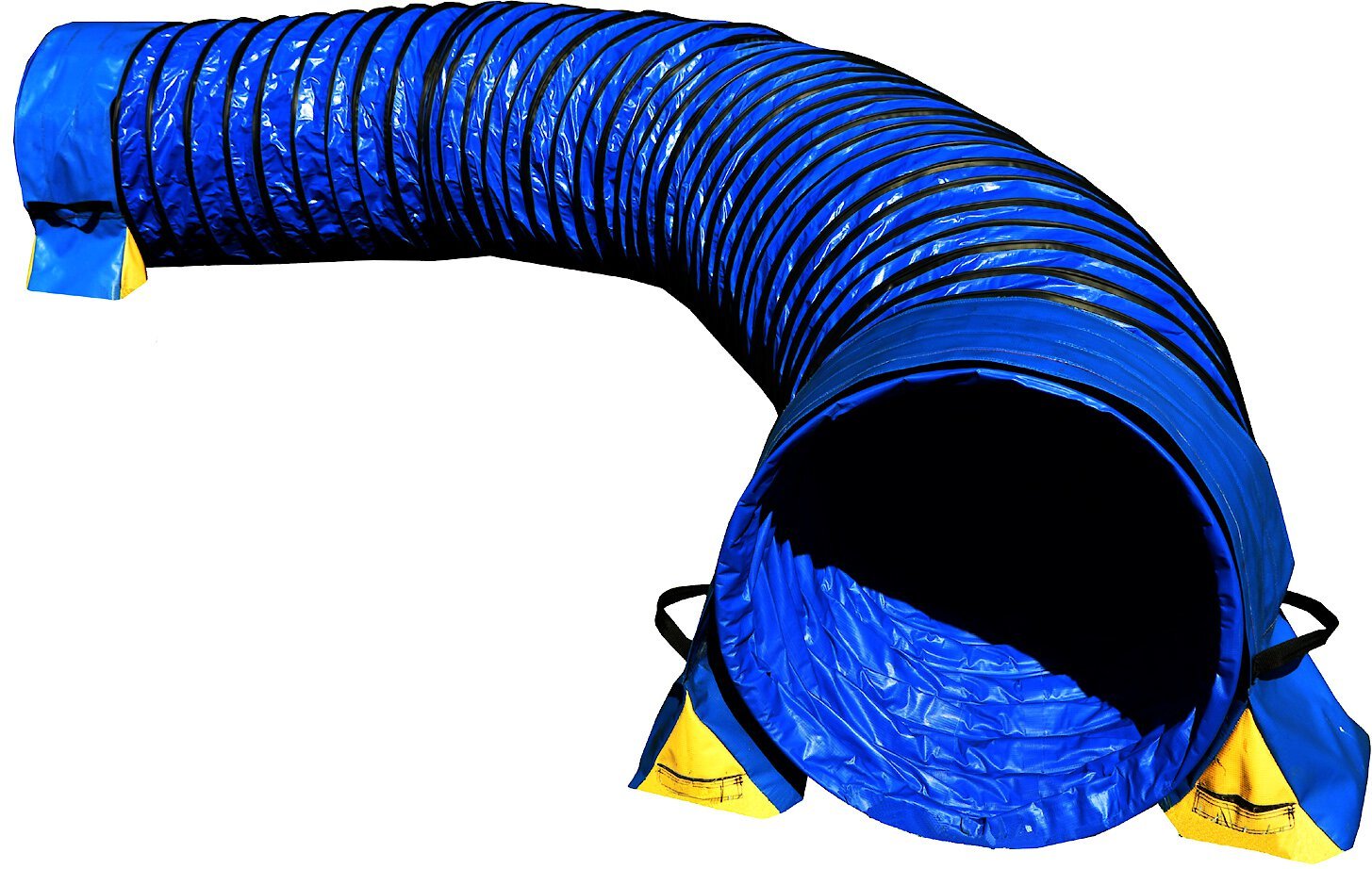Dog agility is a newer dog sport, but it’s exciting. The dogs’ energy and intensity are palpable as they fly over jumps and launch out of tunnels, guided by their handlers’ gestures and voices. That excitement draws many owners into dog agility as a fun outlet for their pups’ energy — quickly hooking them.
If the dog agility bug bit you too, maybe it is time to set up a small DIY dog agility course at home. Most of the setup can be repurposed household items, while others are as easy as a little PVC and time.
When you watch the different organizations’ trials, you will notice that each one has a distinctly different style. Some have slats on some of the contact obstacles, others have wings on the sides of the jumps — or maybe you saw barrels, a tire jump, and a hoop.
What You Need to Know About DIY Dog Agility Equipment
The first thing you need to know when you’re considering a DIY agility course is that it does not matter if it is pretty. Your dog will not care if you carefully craft beautiful jumps and an A-frame, or if you just grab what is available and make it work.
When you decide to make a few dog agility obstacles, be sure to consider safety. Dogs are notorious for hiding injuries. Some are so bad about it that they can have a broken leg and still want to play! It is our job to keep them healthy — part of that is making sure our pup’s agility course isn’t going to collapse on them.
Here are a few ideas for setting up your very own agility course with DIY equipment that will not break your budget.
DIY Dog Agility Jumps
No matter which agility organizations are most active near you, they all have jumps on their courses. Some have “wings” on each side, and others have a broad jump, but a simple bar jump is the core of all of these. Competition bar jumps are usually one-inch PVC with a four- or five-foot jump bar. However, the wings and broad jumps in some agility venues are sometimes wood or other material.
For making jumps at home, don’t bother with one-inch PVC. It is more expensive and heavier to move around. If you are handy and feel like taking the time, making them out of three-quarter-inch PVC is more affordable and lighter weight.
However, if you are not sure your pooch would love dog agility, you can improvise a jump or two with a few items around the house. Here are a few ideas:
- Curtain rods and broomsticks make great jump bars.
- 12-20-inch-tall orange cones are terrific bar supports, but empty boxes can also work!
- End tables can be jump supports for bigger dogs.
Almost anything can become a jump — I have even used downed tree limbs while out on a walk with the dogs. Those are fun because my dogs are accustomed to a PVC agility jump being in front of them, so the tree limb made them think a little more.
Barrels — the DIY Dog Agility Way
This obstacle is only really present in NADAC agility trials. Regardless, it is a fantastic obstacle for your dog to run around and get a toy or treat at the end. These are sort of like barrels you see in barrel racing for horses but on a smaller scale.
Barrels can be pretty much anything! Laundry hamper, coffee table, a tree, a boulder, or a garbage bin. At home, I have a dollar-store laundry hamper, but when we are out and about, I use trees and tree stumps.
DIY Dog Agility Tire Jump
Tire jumps come with a caveat: make sure it is big enough for your dog to easily fit through.
Although the original tire jump was an actual tire, these days, we use a variety of materials to make them at home. However, a hula hoop is probably the easiest. If you want to get really fancy, suspend it from a PVC frame so it is easy to jump through. Keep this one low to the ground at first, because it is confusing for many dogs.
Other materials you can use are landscape drainpipe and duct tape — I had one of these years ago and made another last year. I prefer the drainpipe’s size because it is extremely visible. The side diameter of the tire must be at least 20 inches, but 24 is better — with the drainpipe, you can cut exactly what you want for your tire jump.

You can DIY agility equipment out of just about anything.
©Kamil Macniak/Shutterstock.com
DIY Tunnels for Dog Agility
Tunnels are a little trickier. Competition tunnels are typically 24 inches in diameter and 15-20 feet long. Usually made from heavy-grade PVC, they are heavy and very hard to move. These tunnels last for a few years out in the sun. However, at $500 and up, they are out of the question for many people.
While there are a few more affordable practice tunnel options, like the Chewy link below, you could use a kids’ play tunnel if the opening is big enough for your dog. Or you could take a blanket or tarp and suspend it over a cable about two feet off the ground. An indoor improvised tunnel could be a sheet secured over several chairs.
How to Make DIY Weave Poles
These you’ll have to make or buy. For most agility organizations, the spacing between each pole is 24” from center to center of each pole. If you are just starting out and don’t know if you will continue, do worry about weave poles. They are hard for the dogs to learn, often taking several weeks or months — I don’t recommend trying them without the help of an instructor, either online or in person.
If you make them, the quick and dirty version is the type you stick in the ground. You will need two sticks of PVC (3/4” is perfect), several end caps, and six-inch-long carriage bolts with nuts. Cut each pole into three 36-inch lengths, drill a hole big enough for the carriage bolt in each end cap, pop the bolt through, and secure it with a nut. Then attach one to each weave pole.
Unless you make something for a quick measurement, you will need to measure the spacing each time you move them. Some companies sell a weave pole measuring tape with grommets installed at 24-inch intervals.

Competition weave poles are expensive! But you can DIY a set of your own out of PVC.
©Mark Herreid/Shutterstock.com
Dog Walk, A-Frame, and Teeter
The more time you spend going to dog agility classes, the more likely you are to start drooling over the big items — A-frames, dog walks, and teeters.
These are the contact obstacles. In agility trials, the dogs have to touch at least one paw in the bright-colored end on their way off of the obstacle. Most often, the contact zones are yellow, but the rest of the obstacle can be painted any other solid color that contrasts with the yellow.
You can build these yourself. There are numerous plans available online, but if you decide to DIY these dog agility equipment items, do not skimp. You can scale down the size to save money but buy quality parts for building them.
Dog Agility Should Be Fun!
The more time we spend teaching and training our dogs, the more we realize how special the relationship is between our two species. Humans selectively bred wolves over a hundred thousand years into the various dog breeds we see today. Each breed or mix of breeds has differences in personality and athleticism, not to mention the sheer variety in appearance!
No matter what kind of dog you have, agility is something the two of you can do together. It will deepen your bond, increase your dog’s obedience, and keep them healthier for longer. Dog agility is truly a win-win scenario for dogs and their owners — give it a try!
Ready to discover the top 10 cutest dog breeds in the entire world?
How about the fastest dogs, the largest dogs and those that are -- quite frankly -- just the kindest dogs on the planet? Each day, AZ Animals sends out lists just like this to our thousands of email subscribers. And the best part? It's FREE. Join today by entering your email below.
Thank you for reading! Have some feedback for us? Contact the AZ Animals editorial team.









